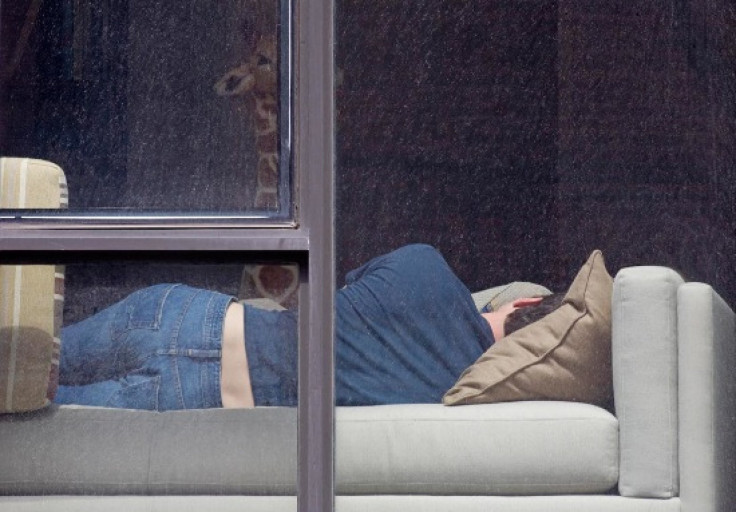Arne Svenson ‘Neighbors’ Exhibit: Is It Legal To Take Secret Photos Of People In Their Apartments?

New York City apartment-dwellers are used to being exposed to the wandering eyes of their neighbors, but a new photography exhibit is testing the limits of the city’s famous tolerance for voyeurism.
Arne Svenson, a photographer and artist, fastened a telephoto lens to his camera and secretly took pictures of his across-the-street neighbors, residents of the luxury Zinc Building in Tribeca, a sleek and modern condominium building with floor-to-ceiling windows.
The residents were surprised, and some were downright livid, when they discovered that they -- and in some cases their children -- are now the subjects of Svenson’s new exhibit, “The Neighbors,” which opened at a Chelsea gallery last week. Some of those neighbors are considering taking legal action against Svenson, according to reports in the AP and the New York Post. But do they have a case?
Mickey Osterreicher, general counsel for the National Press Photographers Association, an advocacy group for photojournalists, said the legalities of the situation are murky, particularly as Svenson’s chosen method -- snapping photos of people in their apartments and featuring them in an art exhibit -- is largely uncharted territory.
“It’s not as cut-and-dried as it seems at first blush,” Osterreicher said in a phone interview.
Osterreicher, a veteran photojournalist with experience in copyright and First Amendment law, said his initial reaction to the photos was that Svenson had violated the residents’ privacy, but he said the fact that none of the images feature the residents’ faces might make legal action against Svenson more challenging.
Svenson would be on much firmer legal ground if he had photographed fellow New Yorkers on the street, a well-established norm for artists, Osterreicher added. He cites the New York Supreme Court’s 2007 decision in Nussenzweig v. DiCorcia. Erno Nussenzweig, a Hassidic Jew, unsuccessfully sued photographer Philip-Lorca DiCorcia after discovering that DiCorcia had featured his image in an exhibit. The court decision held that a photographer doesn’t need a subject’s consent to display, publish or sell street photography.
“That’s one of the things that distinguishes public from private,” he said. “In public, you have no reasonable expectation of privacy.”
This is not to say that photos taken of people on the street are fair game. Images that turn up in advertisements, for instance, or those that hold their subjects up to public ridicule, could present a cause for legal action. But street photographers taking photos for artistic purposes are generally protected. In Svenson’s case, that’s not necessarily so.
“It’s a different situation,” Osterreicher said. “Here you have people being photographed in the most intimate of circumstances. So it’ll be interesting to see how it plays out.”
Svenson did not return a request for comment. In press material he said privacy was not an issue for his subjects and likened himself to a bird-watcher: “[My subjects] are performing behind a transparent scrim on a stage of their own creation with the curtain raised high. ‘The Neighbors’ don’t know they are being photographed; I carefully shoot from the shadows of my home into theirs.”
Despite the privacy concerns, Osterreicher acknowledged that Svenson’s images show the mark of a gifted photographer. “Aesthetically, I think they’re wonderful,” he said. “They are real works of art, but that’s not the issue.”
The 60-year-old Svenson is not the first photographer to capture images of strangers in private spaces. The photographer Michele Iversen has been taking such photos since 1995, as Studio 360 reported in 2010. But the brewing controversy surrounding Svenson’s exhibit could potentially give such methods unprecedented national exposure. If legal action is taken, court decisions could either inhibit or embolden future peeping photogs. In the meantime, you might ask: Why not just pull down the shades?
“There is an argument there that could be made,” Osterreicher said. “Maybe they should’ve thought of that before they bought the luxury condos with the glass walls. But I think it gets back to ‘Your home is your castle.’”
Got a news tip? Send me an email. Follow me on Twitter: @christopherzara
© Copyright IBTimes 2024. All rights reserved.












